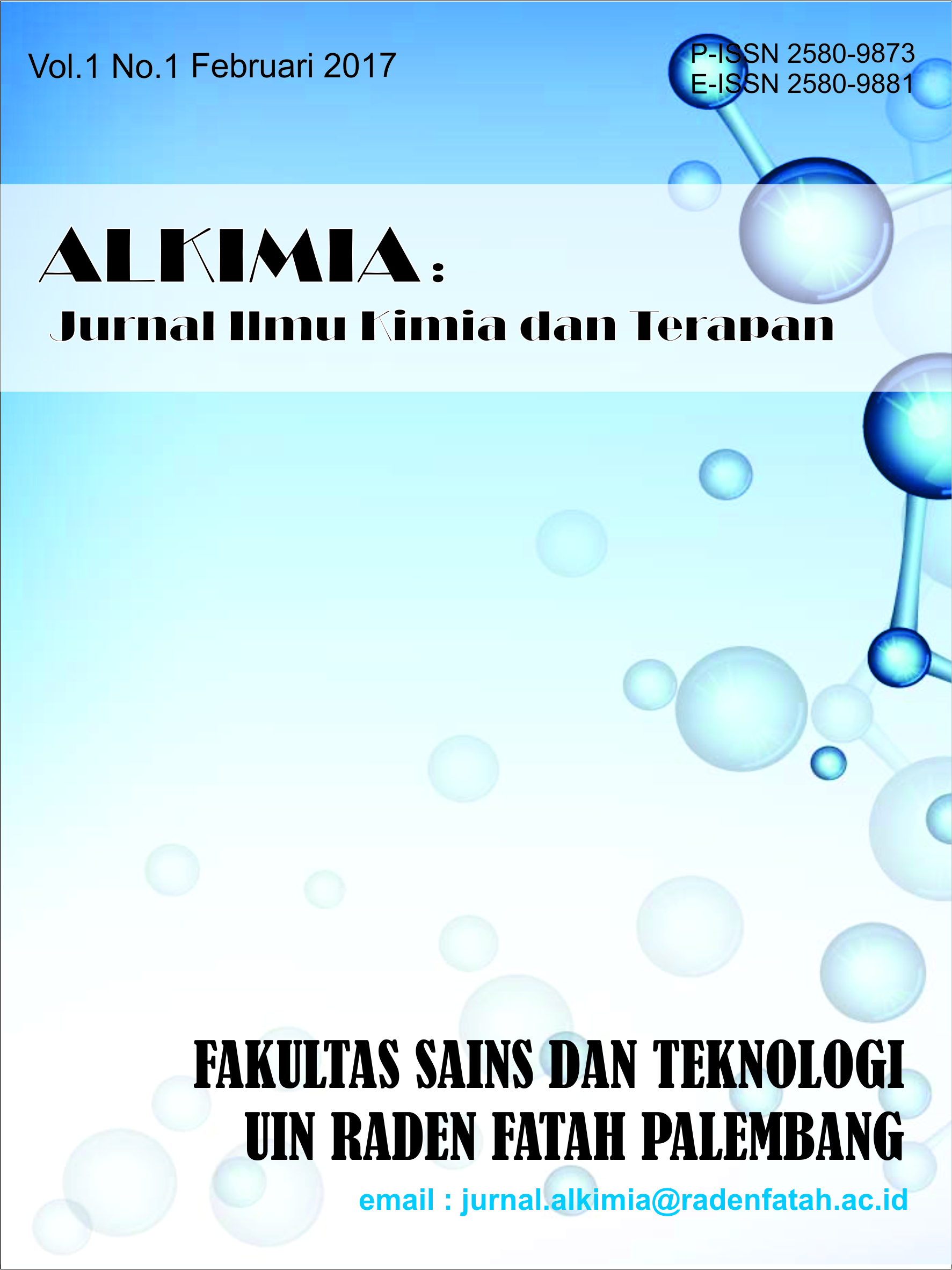Microwave-Assisted Alkaline (NaOH) Pretreatment of Empty Palm Fruit Bunches (EPFB) in the Production of Second-Generation Bioethanol
DOI:
https://doi.org/10.19109/zw8f0b77Keywords:
Second-Generation Bioethanol, Empty Fruit Bunches of Oil Palm (EFBOP), Microwave Assisted-Alkaline Pretreatment, Lignocellulose, Renewable EnergyAbstract
The scarcity of fossil fuels drove the development of renewable energy, including second-generation bioethanol derived from lignocellulosic biomass. Empty Fruit Bunches of Oil Palm (EFBOP) represented an abundant agro-industrial waste rich in cellulose, thus showing potential as a bioethanol feedstock. This study aimed to analyze the effectiveness of the Microwave Assisted-Alkaline Pretreatment method in optimizing the conversion of EFBOP into bioethanol. The pretreatment process employed NaOH and microwave radiation to reduce lignin content, increase cellulose concentration, and decrease crystallinity levels. The study also evaluated the influence of Microwave Power (380 W, 500 W, 700 W) and alkali concentration (0.5 M, 0.6 M, 0.7 M) on lignin, cellulose, hemicellulose content, and ethanol production. The research sought to enhance the efficiency of converting EFBOP waste into renewable energy, supporting environmental sustainability and energy security. Results revealed the optimal pretreatment condition with 0.6 M NaOH concentration and 500 W microwave power, achieving a lignin reduction from 40.73% to 29.48%. The final bioethanol yield reached 14%.
References
D. K. Putri, R. Rosalina, and R. Sutri, “Pre-Treatment Tandan Kosong Kelapa Sawit Sebagai Bahan Baku Bioetanol Dengan Bantuan Gelombang Microwave,” J. Redoks, vol. 8, pp. 43–48, 2023, doi: 10.31851/redoks.v8i1.9313.
H. Khairiah and M. Ridwan, “Pengembangan Proses Pembuatan Bioetanol Generasi Ii Dari Limbah Tandan Kosong Kelapa Sawit,” J. Pangan dan Agroindustri, vol. 9, no. 4, pp. 233–240, 2021, doi: 10.21776/ub.jpa.2021.009.04.5.
A. G. Arruda, J. Fischer, and C. Z. Guidini, “Produksi kompleks enzimatik dari biomassa agroindustri dan aplikasinya dalam bahan bakar etanol Produksi enzim kompleks dari biomassa agroindustri dan aplikasinya dalam bahan bakar etanol Produksi enzim kompleks dari biomassa agroindustri dan aplikasinya ,” vol. 2021, pp. 1–10, 2021.
S. Octavia, “Efektifitas Penggunaan Amoniak Berulang Pada Proses Penghilangan Lignin Bagas Tebu Untuk Meningkatkan Perolehan Hidrolisat Gula Sebagai Sumber Bioetanol,” J. Katalisator, vol. 1, no. 2, 2016, doi: 10.22216/jk.v1i2.1392.
Y. T. Rahkadima and M. A. Fitri, “Effect of Chemical and Microwave Heating Treatment for Reducing Sugar Recovery,” J. Kim. Ris., vol. 7, no. 1, pp. 74–80, 2022, doi: 10.20473/jkr.v7i1.36189.
N. D. Jablonowski, M. Pauly, and M. Dama, “Microwave Assisted Pretreatment of Szarvasi (Agropyron elongatum) Biomass to Enhance Enzymatic Saccharification and Direct Glucose Production,” Front. Plant Sci., vol. 12, no. January, pp. 1–12, 2022, doi: 10.3389/fpls.2021.767254.
H. Simatupang, A. Nata, and N. Herlina, “STUDI ISOLASI DAN RENDEMEN LIGNIN DARI TANDAN KOSONG KELAPA SAWIT ( TKKS ),” vol. 1, no. 1, pp. 20–24, 2012.
T. Sriana, T. Dianpalupidewi, P. Ukhrawi, and I. Fatyasari, “Pengaruh Konsentrasi Sodium Hydroxide ( NaOH ) pada Proses Delignifikasi Kandungan Lignoselulosa Serat ( Fiber ) Siwalan ( borassus flabellifer ) sebagai Bahan Dasar Pembuatan Bioethanol,” vol. 4, no. 2, pp. 49–52, 2021.
T. Attaya and S. Rosalinda, “Efek pra-perlakuan menggunakan microwave terhadap kandungan lignoselulosa kulit ari jagung,” Agrointek J. Teknol. Ind. Pertan., vol. 19, no. 3, pp. 576–583, 2025, doi: 10.21107/agrointek.v19i3.21581.
N. S. Gailea, “Pengaruh Konsentrasi Natrium Hidroksida dan Waktu Pemasakan terhadap Penurunan Kadar Lignin menggunakan Kulit Jagung ( Zea Mays ) dengan Proses Soda,” Innov. J. Soc. Sci. Res., vol. 4, no. 4, pp. 10740–10749, 2024, [Online]. Available: https://j-innovative.org/index.php/Innovative%0APengaruh
M. R. Siregar, Y. Hendrawan, and A. W. Nugroho, “The Effect Of NaOH Concentration And Microwave Heating Time On Pretreatment Process Toward Lignocellulose Content Of Chlorella vulgaris,” J. Teknol. Pertan., vol. 15, no. 2, pp. 129–138, 2014.
M. D. Lestari, Sudarmin, and Harjono, “Ekstraksi Selulosa dari Limbah Pengolahan Agar Menggunakan Larutan NaOH sebagai Prekursor Bioetanol,” Indones. J. Chem. Sci., vol. 7, no. 3, pp. 236–241, 2018, [Online]. Available: http://journal.unnes.ac.id/sju/index.php/ijcs
Zulmanwardi and Rosalin, “Optimasi pelarut NaOH dan HCl pada proses pembuatan pilp selulosa dari limbah jerami padi,” Pros. 4th Semin. Nas. Penelit. Pengabdi. Kpd. Masy., pp. 7–12, 2020.
N. K. Sari, “Pembuatan bioetanol dari rumput gajah dengan distilasi batch,” J. Tek. Kim. Indones., vol. 8, no. 3, p. 94, 2018, doi: 10.5614/jtki.2009.8.3.4.
P. Perlakuan, A. Basa, D. A. N. Asam, T. Kadar, R. Tandan, and K. Sawit, “Kadar gula reduksi TKKS Sutikno et al Kadar gula reduksi TKKS,” vol. 20, no. 1, pp. 1–10, 2015.
Downloads
Published
Issue
Section
License
Copyright (c) 2025 Rayna Catulisti, Putri Ramadani, Muhammad Hadi Pratama, Rima Daniar, Lety Trisnaliani, Zurohaina, Nurul Kholidah

This work is licensed under a Creative Commons Attribution-ShareAlike 4.0 International License.
- The author saves the copyright and gives the journal simultaneously with the license under Creative Commons Attribution License which permits other people to share the work by stating that it is firstly published in this journal.
- The author can post their work in an institutional repository or publish it in a book by by stating that it is firstly published in this journal.
- The author is allowed to post their work online (for instance, in an institutional repository or their own website) before and during the process of delivery. (see Open Access Effect).







.png)




